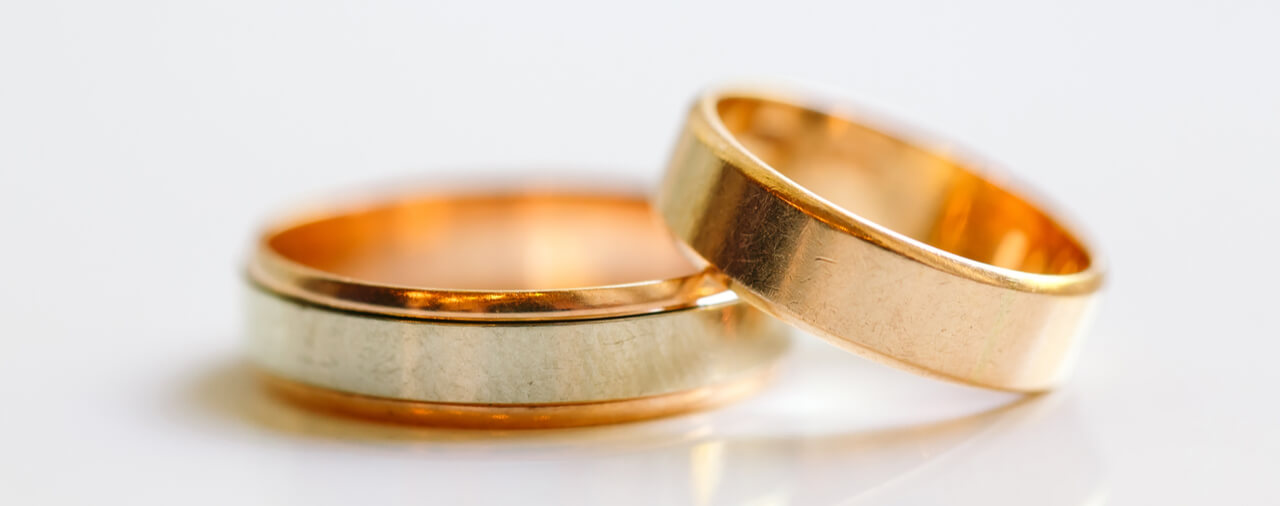- Introduction
- Burden of Proving Eligibility for Visa Based Upon Marriage
- Determining whether previous marriage was bona fide
- Conclusion
Introduction
As we explain in our detailed article on marriage fraud, the penalties imposed for being found to have entered into a marriage for purpose of circumventing U.S. immigration laws are extremely severe. In the event that an alien previously gained an immigration benefit through marriage to a U.S. Citizen (USC) or lawful permanent resident (LPR), and then seeks to obtain a visa through another marriage to a USC or LPR, United States Citizenship and Immigration Services (USCIS) will assess the veracity of the previous marriage when adjudicating the current marriage petition. If USCIS finds that the previous marriage was a sham, or that the alien attempted or conspired to enter into a sham marriage, the current immigrant visa petition based upon marriage to an LPR or USC will be denied. This article will explain what immigration adjudicators look at in assessing the veracity of previous marriages, and the rules they must follow in doing so. By effect, this article will show the types of evidence that a person seeking an immigrant benefit based upon marriage to a USC or LPR should be prepared to present in the event that he or she had previously obtained or sought an immigrant benefit under the same grounds.
Burden of Proving Eligibility for Visa Based Upon Marriage
Courts have consistently held that, as stated in Matter of Brantigan, 11 I&N Dec. 493 (BIA 1966), “[i]n visa petition proceedings the burden of proof to establish eligibility for the benefit sought rests with the petitioner[.]”1 Furthermore, USCIS regulations found in 8 C.F.R. § 103.2(b)(1) state that an applicant or petitioner for an immigration benefit must establish that he or she is eligible at the time he or she requests the benefit. Judicial precedent and the cited regulation combine to place the burden of demonstrating eligibility for immigration status based upon marriage squarely on the U.S. citizen (USC) or lawful permanent resident (LPR) and his or her spouse.
Determining Whether Previous Marriage Was Bona Fide
INA § 204(c) states that a visa petition based upon marriage to a USC or LPR shall be denied if the Attorney General finds that the alien previously entered into a marriage for the purpose of evading immigration laws. Furthermore, the visa petition would also be denied if the Attorney General determines that the alien has attempted or conspired to enter into a marriage in order to evade immigration laws. USCIS regulations found in 8 C.F.R. § 204.2(a)(1)(ii) add that a visa application based upon marriage will be denied if there is “substantial and probative evidence of such an attempt or conspiracy [to enter a marriage to evade immigration laws], regardless of whether that alien received a benefit through the attempt or conspiracy.” The regulation goes on to add that, while being convicted of or prosecuted for the attempt or conspiracy is not a requirement for the denial of the visa petition, evidence of the attempt or conspiracy must be contained in the alien’s file.2
While a USCIS District Director may rely upon evidence of previous attempts or conspiracies in an alien’s file to deny a petition for a visa based upon marriage to a USC or LPR, the BIA held in Matter of Tawfik, 20 I&N Dec. 166, 168 (BIA 1990), that “[the District Director] should not give conclusive effect to determinations made in prior proceedings, but, rather, should reach his [or her] own independent conclusion based on the evidence before him [or her].”3 In short, the BIA held that while the District Director should consider previous adverse findings against the alien if he or she gained or attempted to gain an immigration benefit through marriage, he or she should assess the evidence rather than solely rely upon a previous determination of a conspiracy or attempt to enter into a conspiracy to evade immigration laws. In the event that there is not an affirmative finding that a previous marriage was entered into to evade immigration laws, the BIA held that it is incumbent on the District Director to assess evidence regarding the previous marriage and determine whether it was, in fact, a sham marriage.
With regard to a previous marriage, the District Director may consider the following in determining whether the previous marriage was bona fide:
- an admission by either party that the marriage was a sham;
- proof that the spouse was paid to enter the marriage;
- proof that the marriage was never consummated;
- proof that the couple never cohabited; and/or
- proof that the couple never held themselves out to family and friends as husband and wife.4
However, see Mensah v. Riordan, Civil Action No. 12-11999-PBS (D. Mass. July 26, 2013), specifically with regard to point 2. In that case, USCIS denied immigration benefits based on marriage to a USC because his previous marriage to a USC was deemed fraudulent. However, USCIS’s decision was reversed on account of the fact that it relied almost solely upon an affidavit by his previous spouse in determining that the marriage was fraudulent, while not giving weight to questionable circumstances surrounding the affidavit. Furthermore, the Court found that adjudicators had not properly considered compelling evidence submitted by the plaintiff that supported his assertion that he had entered into the previous marriage in good faith.
Note that pursuant to Matter of Tawfik, 20 I&N at 169, evidence that a couple was not cohabiting at the time a petition was denied is not sufficient to demonstrate that a marriage was a sham. Furthermore, the BIA held in Matter of Peterson, 12 I&N Dec. 663 (BIA 1968), that not consummating a marriage does not necessarily make a marriage fraudulent.
In Matter of Laureano, 19 I&N Dec. 1, 2-3 (BIA 1983),5 has held that the primary consideration in determining whether a marriage was entered into for the primary purpose of circumventing immigration laws “is whether the bride and groom intended to establish a life together at the time they were married.”6 In Laureano, the BIA cited Matter of Phillis, 15 I&N Dec. 385, 387 (BIA 1975), in listing that evidence supporting the assertion that the parties in a marriage “intended to establish a life together at the time they were married” may include “proof that the beneficiary has been listed as the petitioner’s spouse on insurance policies, property leases, income tax forms, or bank accounts; and testimony or other evidence regarding courtship, wedding ceremony, shared residence, and experiences.”
Accordingly, regulations found in 8 C.F.R. § 204.2(a)(1)(iii)(B)(1)-(6), list evidence that may be provided to support the assertion that a marriage was entered into for legitimate purposes:
- documentation showing joint ownership of property;
- lease showing joint tenancy of a common residence;
- documentation showing commingling of financial resources;
- birth certificate(s) of child(ren) born to petitioner and beneficiary;
- affidavits of third parties having knowledge of the bona fides of the marital relationship; or
- any other documentation which is relevant to establish that the marriage was not entered into in order to evade the immigration laws of the United States.
Pursuant to regulations found in 8 C.F.R. § 103.2(b)(16), USCIS is required to disclose all derogatory information to the applicant for an immigration benefit so that he or she may have the opportunity to review and rebut the information.
Conclusion
In the event that an applicant seeks an immigration benefit based upon a petition filed by a USC or LPR spouse, and the alien had previously sought or obtained an immigration benefit based upon marriage to a USC or LPR, he or she should consult with an experienced immigration attorney for assistance in compiling documentation to support the bona fides of the previous marriage. An applicant may have grounds to appeal an adverse finding if it appears USCIS relied too extensively on previous determinations about an old marriage and did not conduct a robust and new review of the evidence pertaining to the old marriage. Furthermore, pursuant to its own regulations, USCIS is required to turn over evidence that supports a decision to deny an immigration benefit based upon marriage. However, while previous determinations are not necessarily decisive, an applicant will have a very high bar to clear if the previous marriage, or attempt to enter into a marriage, was found to be suspect based upon information on file.
Ultimately, if the District Director finds that the previous marriage was a sham marriage, the alien’s current immigrant visa petition will be denied.
- See also Tongatapu Woodcraft Hawaii, Lts v. Feldman, 736 F.2d 1305 (9th Cir. 1984); Matter of Chueng, 12 I&N Dec. 715 (BIA 1968); Matter of Estime, 19 I&N Dec. 450 (1987).
- See also Salas-Veazquez v. INS, 34 F.3d 705, 708 (8th Cir. 1995); Syed v Ashcroft, 389 F.3d 248 (1st Cir. 2004)
- See also Mater of Samsen, 15 I&N Dec. 28 (BIA 1974)
- See Ghaly v. INS, 48 F.3d 1426 (7th Cir. 1995); Salas-Velazquez, supra.; Oddo v. Reno, 17 F.Supp. 2d 529, 532 (E.D. Va. 1998); Al-Kilani v. Barr, 1992 S Dist. LEXIS 5974, *3 (N.D.Ca. 1992); Matter of Kahy, 19 I&N Dec 803, 805 (BIA 1988); and Matter of Phillis, infra.
- Citing Bark v. INS, 511 F.2d 1200 (9th Cir. 1975)
- See also Lutwak v. United States, 344 U.S. 604 (1953); Matter of Boromand, 17 I&N Dec 450 (BIA 1980); Matter of McKee, 17 I&N Dec. 332 (BIA 1980)





